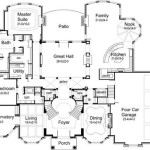What Does Plantar Flexion Mean in Anatomy?
Plantar flexion is a crucial movement in the human body, particularly in the lower limbs. It's a movement that allows us to stand on our toes, walk, and even run. Understanding its meaning and the muscles involved is essential for appreciating the complexity of the human musculoskeletal system. This article will delve into the anatomy of plantar flexion, exploring its definition, the muscles responsible, and the potential consequences of impaired plantar flexion.
Defining Plantar Flexion
Plantar flexion refers to the movement of the foot that bends the foot downwards, essentially pointing the toes away from the body. Imagine standing on your tiptoes; this is a perfect example of plantar flexion. The opposite movement, where you bend your foot upwards, is called dorsiflexion.
The term "plantar" originates from the "plantar surface," which is the bottom of the foot, the side that faces the ground. During plantar flexion, this surface moves towards the back of the leg. This movement is essential for various daily activities, including walking, running, jumping, and kicking. It also plays a significant role in maintaining balance while standing and moving.
Muscles Involved in Plantar Flexion
Plantar flexion is not just a passive movement. It's a coordinated effort of several muscles located in the calf and foot, working together to move the foot downwards. The primary muscles responsible for plantar flexion are:
- Gastrocnemius: The larger, superficial muscle of the calf, visible beneath the skin. Its primary function is plantar flexion, but it also assists in knee flexion.
- Soleus: Located beneath the gastrocnemius, this muscle is responsible for powerful and sustained plantar flexion. It plays a vital role in walking and running.
- Plantaris: A small, slender muscle that contributes to plantar flexion, but its function is relatively minor.
- Tibialis Posterior: A deeper muscle located in the lower leg. It contributes to plantar flexion and also helps with inverting the foot (turning the sole inwards).
- Flexor Digitorum Longus: This muscle flexes the four smaller toes, also contributing to plantar flexion.
- Flexor Hallucis Longus: Located in the lower leg, this muscle flexes the big toe and contributes to plantar flexion.
Consequences of Impaired Plantar Flexion
When the muscles responsible for plantar flexion are weakened or injured, individuals may experience difficulty performing activities that require this movement. Some potential consequences of impaired plantar flexion include:
- Difficulty Walking and Running: Plantar flexion is essential for pushing off the ground during walking and running. Impaired plantar flexion can lead to a "slapping" gait, where the foot drags on the ground, making walking and running difficult.
- Balance Problems: Plantar flexion contributes to maintaining balance. Weakness in this movement can lead to instability and increased risk of falls.
- Limited Mobility: Many daily activities, like climbing stairs or standing on tiptoes, require strong plantar flexion. Impaired plantar flexion can significantly limit mobility and independence.
- Pain and Discomfort: Pain in the calf, ankle, or foot can be a result of muscle strain, tendonitis, or other injuries related to plantar flexion.
Conditions like plantar fasciitis, Achilles tendonitis, and muscle strains can all affect plantar flexion. Medical professionals can diagnose these conditions and recommend appropriate treatment, which may involve rest, physical therapy, medication, or surgery depending on the severity.
It's important to understand that plantar flexion is a complex movement involving multiple muscles and tendons. Maintaining its strength and flexibility is crucial for overall mobility and well-being. Regular exercise, stretching, and proper footwear can help prevent injuries and maintain healthy plantar flexion.

Plantar Flexion Meaning Origin Dictionary Com

Plantar Flexion Mammoth Memory Definition Remember Meaning

Plantar Flexion The Definitive Guide Biology Dictionary

Plantar Flexion Mammoth Memory Definition Remember Meaning

Referencing Movements Of The Foot And Hand Sydney Physio Clinic

Why Is Ankle Extension Called Plantar Flexion Homework Study Com

Dorsiflexion Definition And Potential Issues 919 Spine
What Is Plantar Flexion And Dorsal How Do They Differ Quora

Dorsiflexion Plantar Flexion Inversion And Eversion

Crossfit Movement About Joints Part 7 The Ankle
Related Posts








